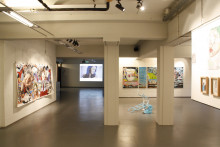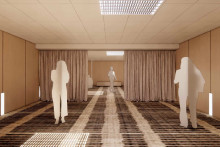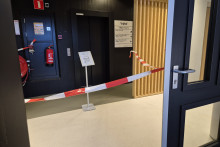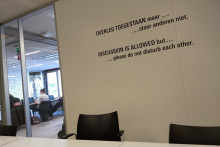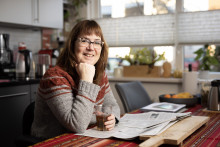In an office filled with paintings, drawings, and magazine illustrations, Tessa Lieffering’s explained to us her job, which she also referred to as her passion. An artist herself, she is the one in charge of planning and setting up the art exhibitions found at Vrijhof.
When she is searching for ideas and content, Lieffering often recurs to her Alma Mater, the AKI Academy of Enschede. ‘When I’m at AKI, I sometimes see things exhibited and go Aha! This should be shown at the University!.’ The art curator also incorporates ideas proposed by the UT’s Studium Generale, the Apollo’s cultural ambassadors, and other student associations. Backed by these communities, she sets up a new exposition roughly every six weeks.
‘We show art to have discussions’
About twice a year, Lieffering receives and exhibits the top picks from the AKI’s staff. ‘In those cases, I never know what I’m going to receive.’ She denies, however, that there are any restrictions to which topics can be addressed or displayed at the campus. ‘We try to keep an open mind. After all, we show art to have discussions.’
The art that sparks questions in the spectator is something Lieffering likes to call ‘intelligent art’, and it is the type of art she finds most suitable for a university. ‘You can have beautiful painted landscapes but with no purpose behind them. And you’re all intelligent human beings, otherwise, you wouldn’t be here. So I would like you to question not technical stuff, like “how long did it take to make this painting?”, but the philosophical or political ideas behind it.’
‘It can make a difference’
Reflecting on the context and audience for the work that she picks, Lieffering believes art can complement an environment already heavy in science and engineering. Thus, she offers some advice on how to approach the exhibitions. ‘Art leaves us with questions, not answers. But that shows you don’t have to take the things happening around you for granted. Getting a house, having children, these things we do, you’re allowed to have your own thoughts about it.’
The artist would hope for people to grant themselves a few minutes to contemplate the exhibitions. ‘The art is here and it is for free. If you decide to give it a chance and it doesn’t do anything for you, well, you didn’t lose anything. But maybe one time it can make a difference.’


